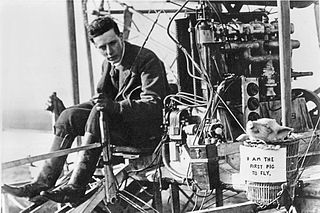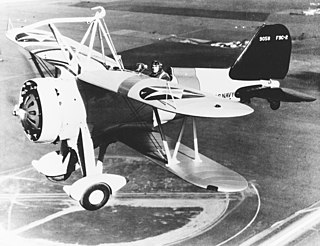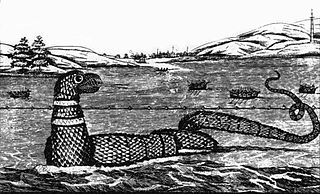
Alberto Santos-Dumont was a Brazilian inventor and aviation pioneer, one of the very few people to have contributed significantly to the development of both lighter-than-air and heavier-than-air aircraft.

The history of aviation extends for more than two thousand years, from the earliest forms of aviation such as kites and attempts at tower jumping to supersonic and hypersonic flight by powered, heavier-than-air jets.

This is a list of aviation-related events from 1912:
This is a list of aviation-related events from 1914.

This is a list of aviation-related events from 1915:
This is a list of aviation-related events from 1916:

This is a list of aviation-related events from 1909:
This is a list of aviation-related events from 1908:
This is a list of aviation-related events from 1907:
A transatlantic flight is the flight of an aircraft across the Atlantic Ocean from Europe, Africa, or the Middle East to North America, Central America, or South America, or vice versa. Such flights have been made by fixed-wing aircraft, airships, balloons, and other aircraft.

Mystery airships or phantom airships are a class of unidentified flying objects best known from a series of newspaper reports originating in the western United States and spreading east during late 1896 and early 1897. According to researcher Jerome Clark, airship sightings were reported worldwide during the 1880s and 1890s. Mystery airship reports are seen as a cultural predecessor to modern claims of extraterrestrial-piloted flying saucer-style UFOs. Typical airship reports involved night time sightings of unidentified lights, but more detailed accounts reported ships comparable to a dirigible. Reports of the alleged crewmen and pilots usually described them as human-looking, although sometimes the crew claimed to be from Mars. It was popularly believed that the mystery airships were the product of some inventor or genius who was not ready to make knowledge of his creation public. For example, Thomas Edison was so widely speculated to be the mind behind the alleged airships that in 1897 he "was forced to issue a strongly worded statement" denying his responsibility.

The Curtiss F9C Sparrowhawk is a light 1930s biplane fighter aircraft that was carried by the United States Navy airships USS Akron and Macon. It is an example of a parasite fighter, a small airplane designed to be deployed from a larger aircraft such as an airship or bomber.

Thomas Scott Baldwin was a pioneer balloonist and U.S. Army major during World War I. He was the first American to descend from a balloon by parachute.

U.S. Air Force aeronautical ratings are military aviation skill standards established and awarded by the United States Air Force for commissioned officers participating in "regular and frequent flight", either aerially or in space, in performance of their duties. USAF aeronautical badges, commonly referred to as "wings" from their shape and their historical legacy, are awarded by the Air Force in recognition of degrees of achievement and experience. Officers earning these badges and maintaining their requirements are classified as rated officers and receive additional pay and allowances.

The Lebaudy Patrie was a semi-rigid airship built for the French army in Moisson, France, by sugar producers Lebaudy Frères. Designed by Henri Julliot, Lebaudy's chief engineer, the Patrie was completed in November 1906 and handed over to the military the following month. The Patrie bears the distinction of being the first airship ordered for military service by the French army.

The following events occurred in December 1909:
Cromwell Dixon was a teenage dirigible pilot and the first person to fly in an airplane across the Continental Divide in September 1911.

The Gloucester sea serpent is a creature reportedly seen around and off the coast of Gloucester, Massachusetts and Cape Ann area. The heyday of sightings began in August 1817 and continued into 1818-19. The earliest alleged sighting of such a creature off Cape Ann was recorded in 1638 by John Josselyn. Occasional sightings continued over the centuries and into the 20th century.



















